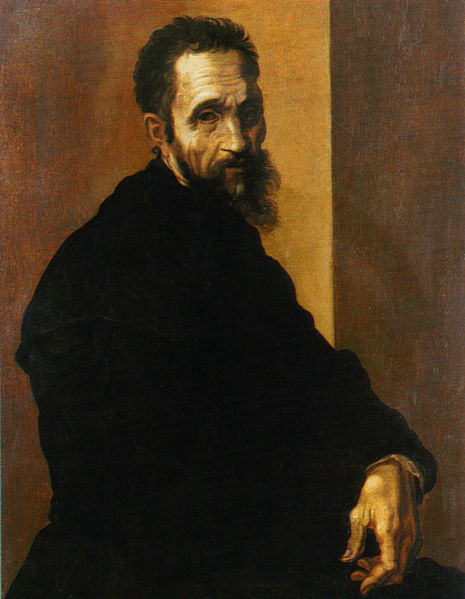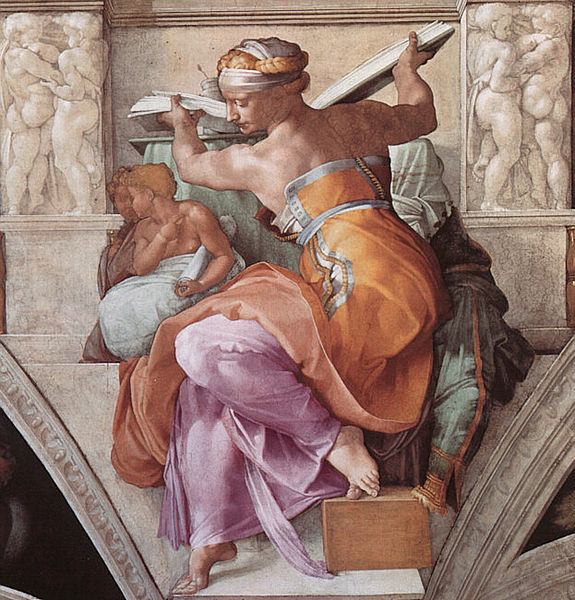Michelangelo Buonarroti was born on March 6, 1475 in Caprese, Tuscany, Italy. His father was a banker, which put his family within the middle class of the social hierarchy at the time. Michelangelo started studying grammar, but hated it, and became an apprentice to the painter Domenico Ghirlandaio. By the following year, he was receiving the same pay as his teacher.
In 1489, Ghirlandaio sent him to the Humanist Academy at the request of Lorenzo Medici, who himself had founded the academy. Lorenzo was famouse in Italy at the time. They were bankers who had taken over the cities’ politics, and while in power spent a lot of money funding the arts. Lorenzo died in April of 1492, which forced Michelangelo to lose his status and move back home with his father.
Two years later, Lorenzo’s successor rehired Michelangelo. Unfortunately, the city’s politics changed, and the Medici’s were thrown out of Florence. The new family in power was the Savonarola. Michelangelo moved from Venice to Bologna in search of work. He returned to Florence towards the end of 1494, because the Medici’s had gained control once more in the city.
He was commissioned to sculpt John the Baptist, which was sold as an ancient art piece. The cardinal that bought it found out it was a fraud, and asked Michelangelo to come to Rome because he thought it was so well done. In 1497, a French ambassador to Rome paid him to sculpt Pietà. It was put on display, but people thought the piece was by another artist. Michelangelo had never been more insulted in his life, and he signed it so there would be no more questioning who actually made it. It is the only piece of sculpture Michelangelo signed or ever needed to sign.
In 1499, the Soderini family came into control, and requested Michelangelo to finish David, a piece that had been unfinished for more than 40 years. Completed in 1504, it was meant to be raised off the ground on a column, which explains the enlarged hands. But when the people saw it, they were enthralled with its beauty. David was placed in the plaza for all to see.
The next year, Michelangelo was asked by Pope Julius II to build his tomb, but due to other projects, it was never completed. For over 40 years he worked on it, but it was missing several statues that would tie the tomb together and finish it. From 1508-1512, he painted the ceiling of the Sistine Chapel . He hated every minute of it, for he thought that his painting was way below acceptable standards. Michelangelo also thought that one of his rivals had convinced Pope Julius II to make him paint so they could watch him writhe in agony for four years. The finished product has 300 figures, and nine episodes from the Book of Genesis. During the entire four years, he barely ate, slept, or went out. His main goal was just to be over and done with this harrowing task.
When he returned to Florence, he was asked to make the tombs for the Medici family in 1513. The first part was the façade for the Basilica of San Lorenzo, which was never finished. However, the tombs meant for two cousins inside were completed. In 1527, the Medici’s were thrown out of Florence again, and this time a republic was set up. Three years later, they were back. Michelangelo left soon after, only after he completed the Laurentian Library, which is attached to the Basilica of San Lorenzo. It has a sweeping marble staircase, with magnificently carved banisters to accompany it.
From 1534-1541, he painted The Last Judgment on the wall of the Sistine Chapel, which was commissioned by Pope Clement VII. Several prominent people are painted into this scene, which came as a surprise. Some of the town’s folk are represented in hell, particularly a certain politician, known for his underhanded dealings. Michelangelo has a self portrait in there as well; the skin Bartholomew is tearing off himself is Michelangelo but unlike the politician, he is in Heaven.
According to Michelangelo, “each stone has a sculpture within it, and that the work of the sculptor is to free the forms.” As seen in the Dying Slaves, each one is in an erotic/emotional pose, meant to make the viewer surge with feeling. There are suppose to be seven, but they were never completed. They were made for Pope Julius II tomb, but were never added on. All the pieces look though as if they are emerging out of the stone, coming into this world as if freed from a long period of confinement.
During his lifetime, he only had one apprentice, Ascanio Condiri, but his art was never recognized like his master’s was. He was also the only artist at the time to have his biography published while he was alive by Giorgio Vasari. Besides being an artist, Michelangelo wrote poetry. It has been said that Michaelangelo wrote more than 300 sonnets and madrigals, a short lyrical poem.

